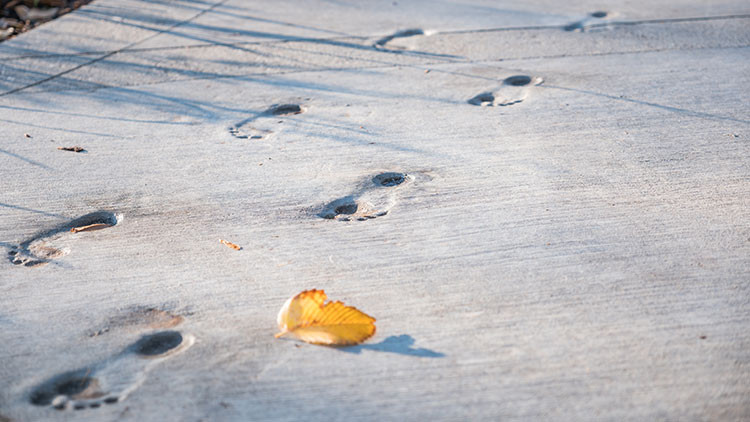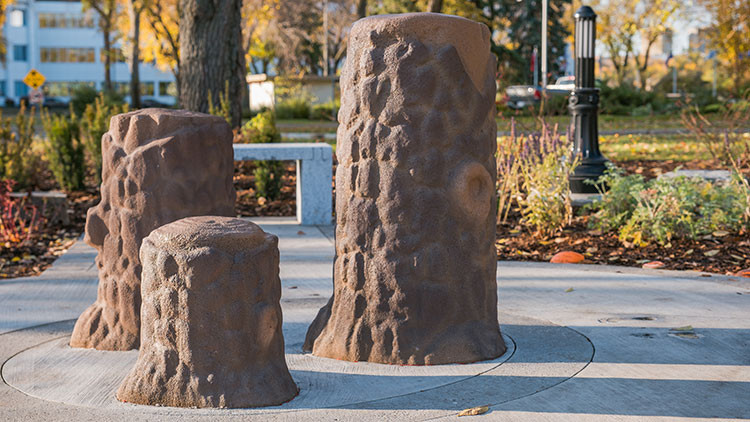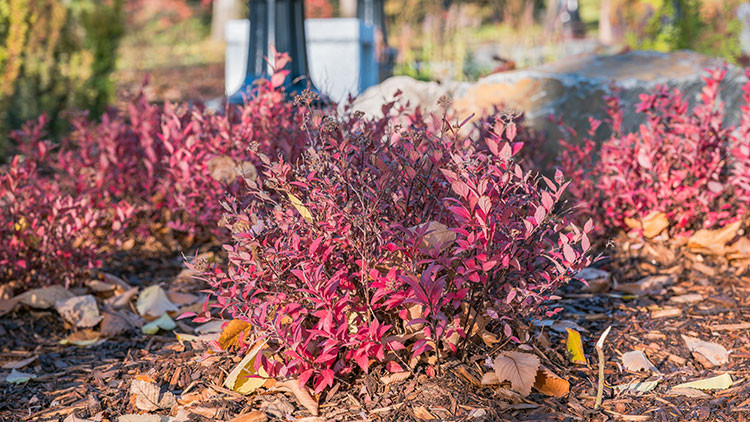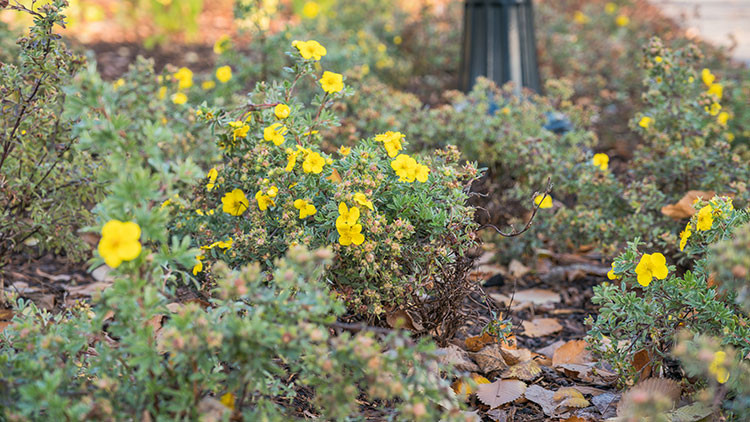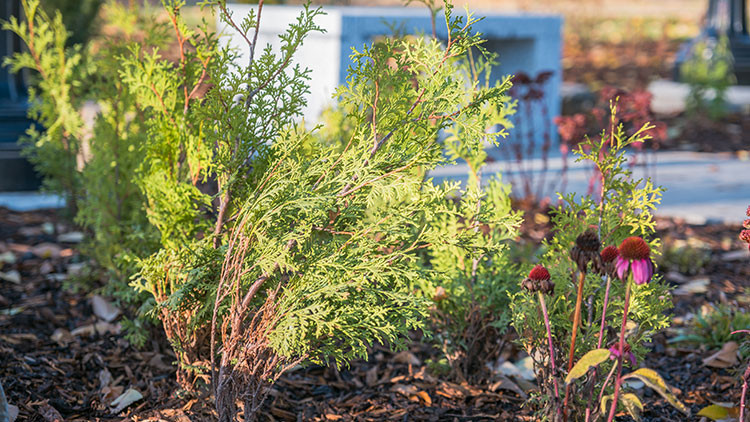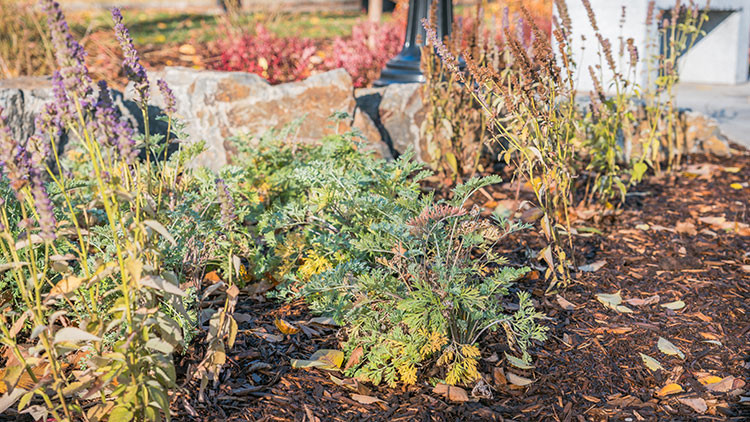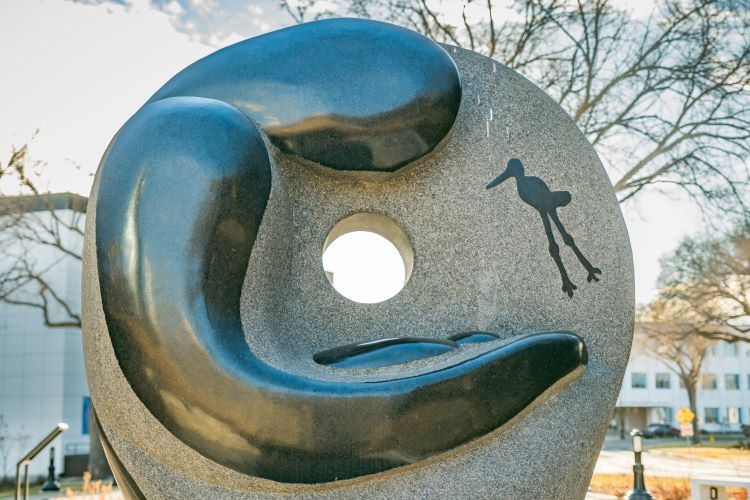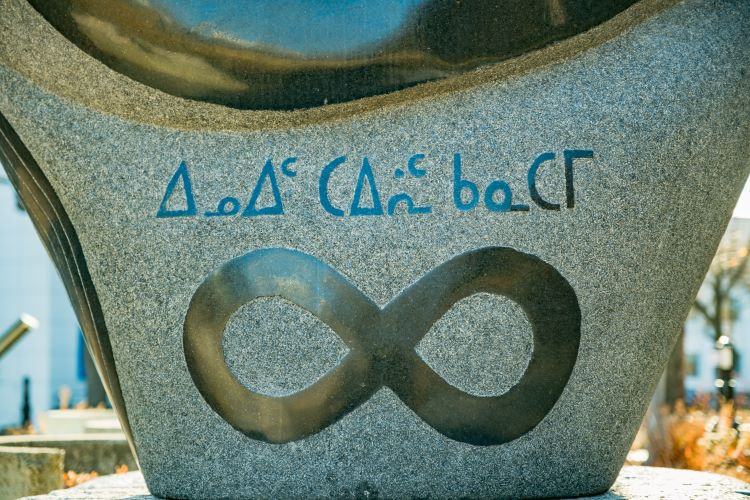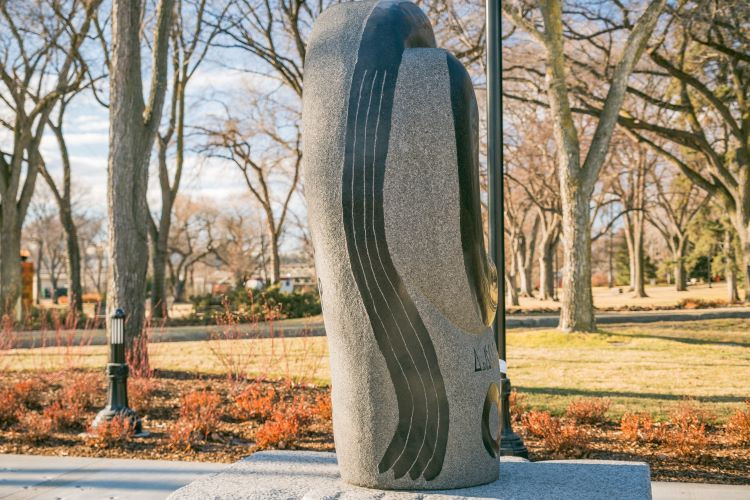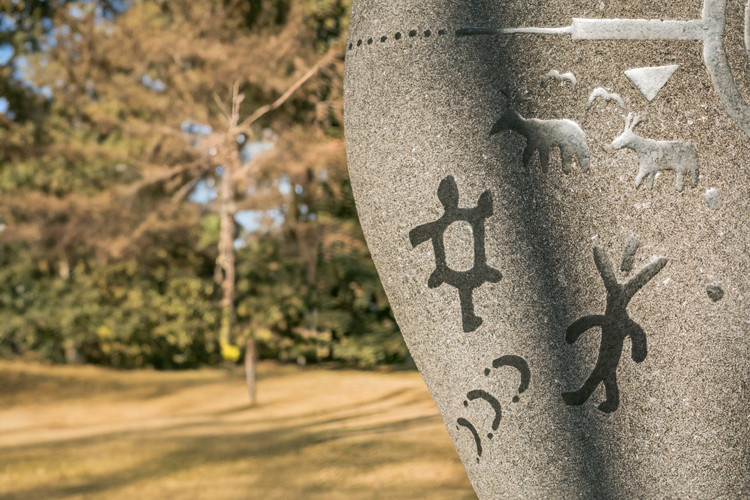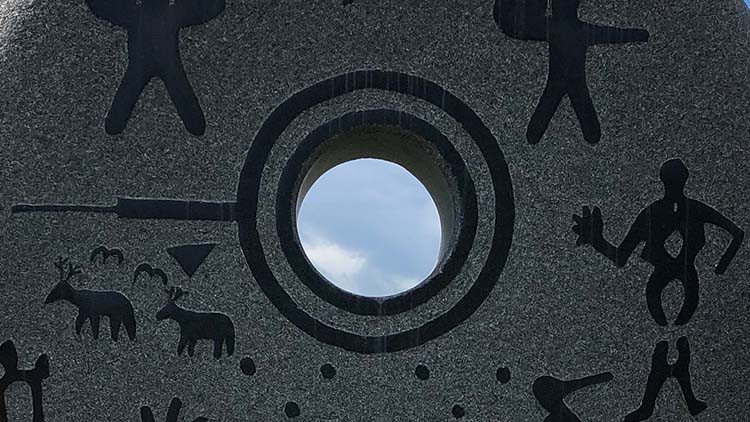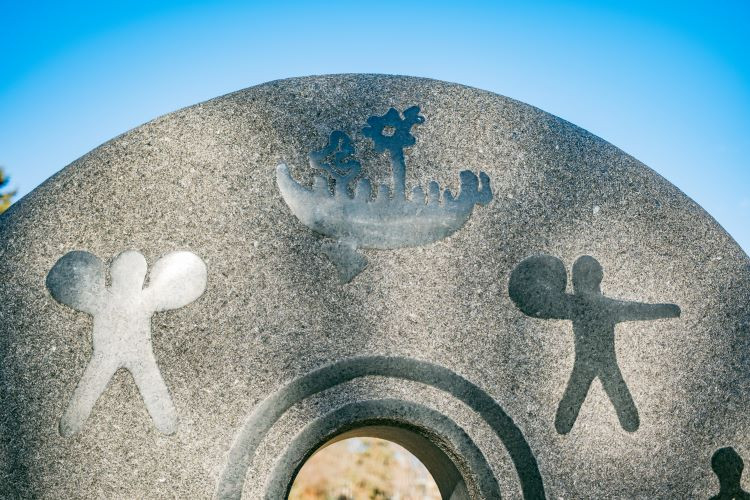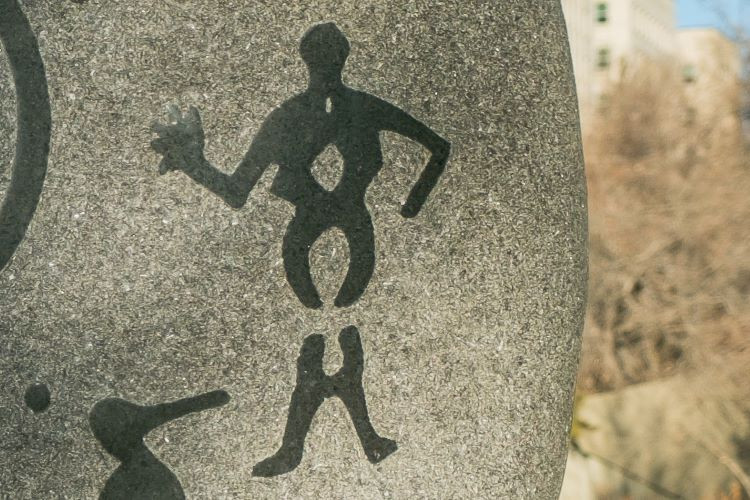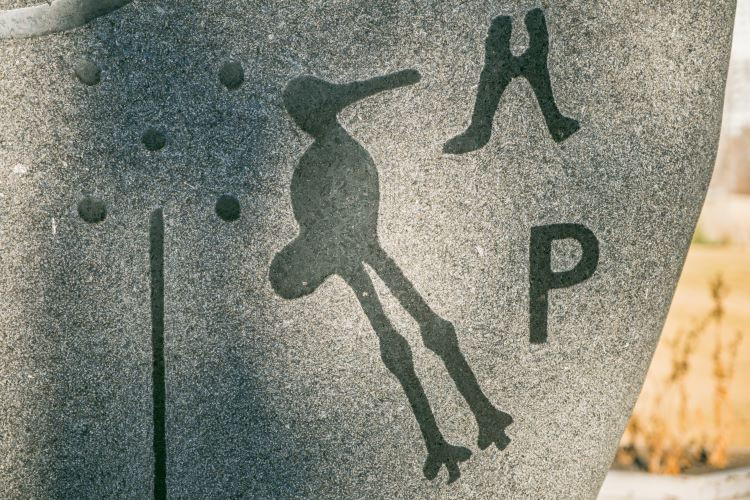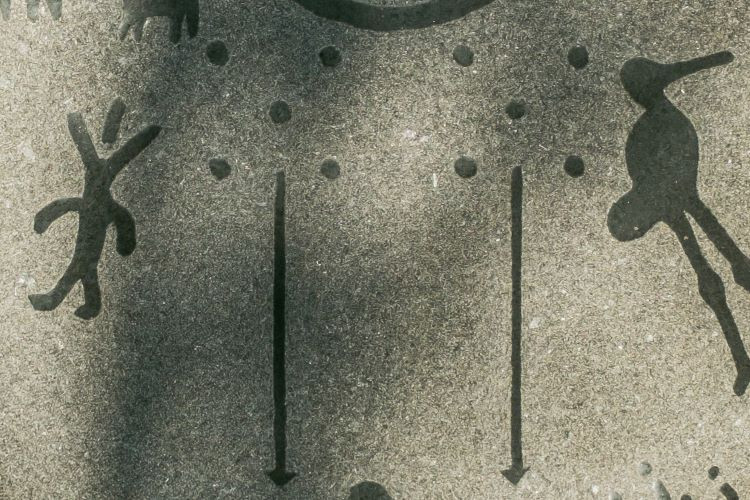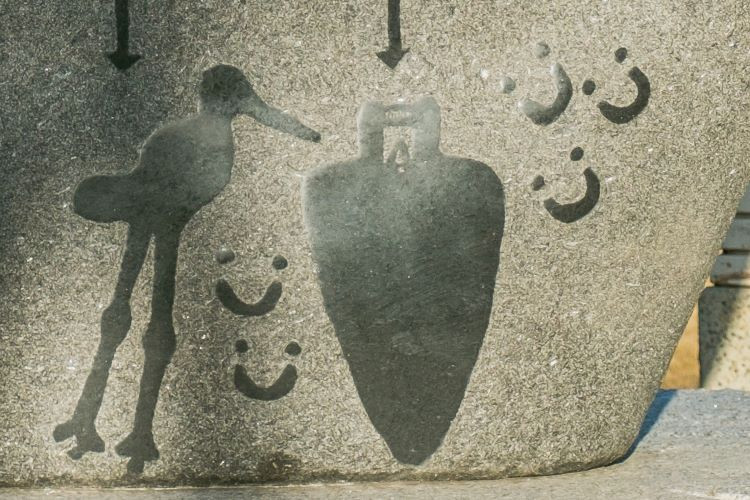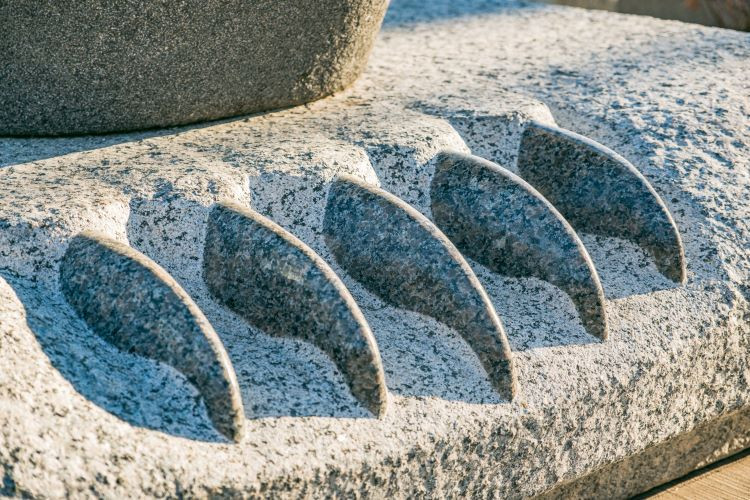“Healing from the harmful, intergenerational effects of residential schools is still very much needed – for the victims, survivors, families and loved ones, but also for the people who built, maintained and enforced the residential school system in Canada.”
- Stewart Steinhauer, Cree carver of Alberta’s official residential school monument
Overview
The name of the reconciliation garden on Alberta’s legislature grounds is Kihciy Maskikiy/Aakaakmotaani. These are Cree and Blackfoot words, respectively, that mean ‘sacred medicine/save many people.’ Indigenous Elders named this garden and guided its design.
Within the garden is a monument to honour the victims and survivors of Canada’s residential school system, titled 'Mother Earth Circling: Healing from the residential school experience.’
Residential schools in Alberta
The National Centre for Truth and Reconciliation offers information and education about residential schools, their ongoing effects and the experiences of the people who attended them.
The garden
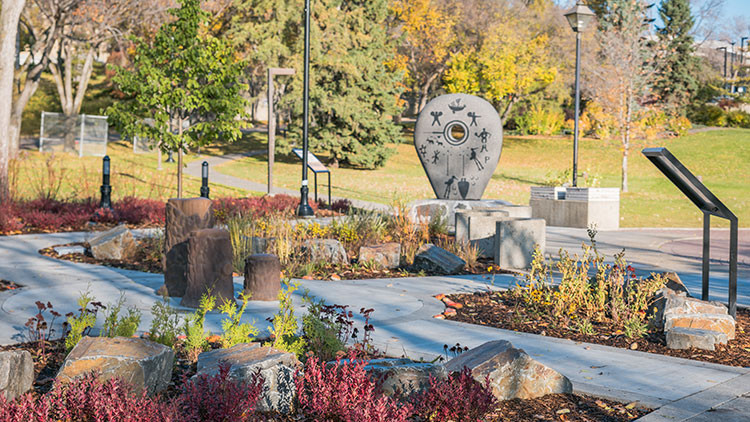
Kihciy Maskikiy/Aakaakmotaani is intended to embody the spirit of reconciliation. It was created under the guidance of Indigenous Elders. The garden is centred around a linden tree that was planted as a sapling in 2021. This tree’s growth over time represents continuity, renewal and the long journey toward reconciliation.
The garden features a medicine wheel, a sacred symbol of the 4 directions and the interconnectedness of all things. The 4 quadrants of the wheel contain sweetgrass, sage, tobacco and cedar.
There is also a diamond willow tree, offering logs, stone benches for contemplation and footprints in the pathway that represent the children who did not return home from residential schools. This is a place for people to reflect, seek guidance and find solace.
Video: Alberta opens new reconciliation garden (September 29, 2023)
Video: Virtual walkthrough of Alberta’s reconciliation garden
Open in Google Maps for directions to the garden.
Learn more about what Alberta is doing towards reconciliation.
The monument
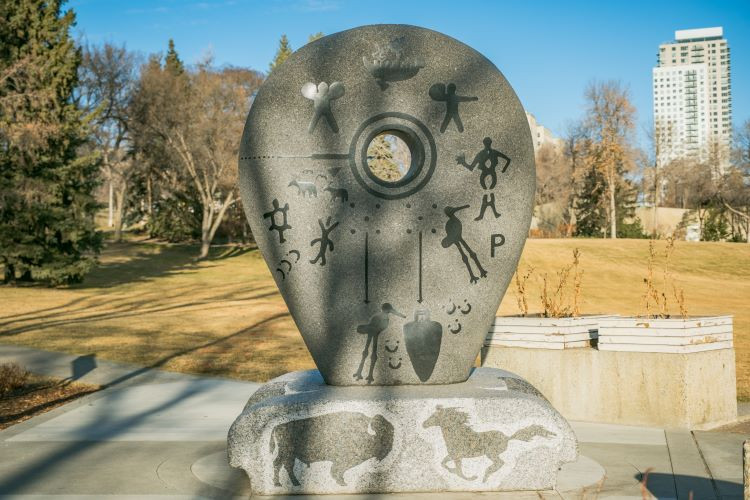
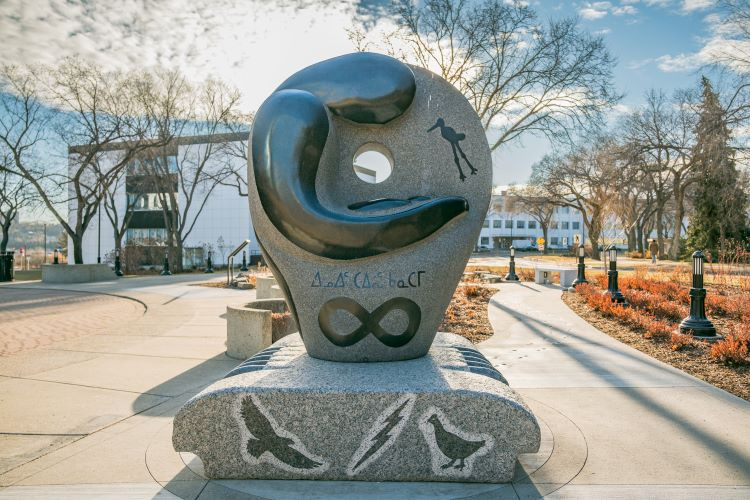
Mother Earth Circling: Healing from the residential school experience
Visitors to Kihciy Maskikiy/Aakaakmotaani can see the towering stone monument to the victims and survivors of residential schools that is proudly on display. This sculpture, 'Mother Earth Circling: Healing from the residential school experience,’ was created by Saddle Lake Cree Nation artist Stewart Steinhauer. It was selected by an Indigenous advisory panel made up of First Nations, Métis and Inuit representatives from across Alberta.
Video: Interview with Stewart Steinhauer
Steinhauer created this sculpture to honour the victims and survivors of Canada’s residential school system. He began carving stone in 1973. He provided the following guide to help visitors interpret this remarkable monument:
